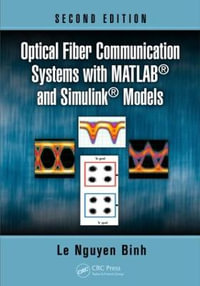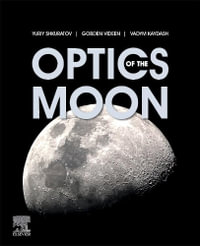| About the Series | p. iii |
| Preface | p. v |
| Contributors | p. xvii |
| Introduction to Chapter 1 | p. 1 |
| Optics in Vision | p. 3 |
| Introduction | p. 3 |
| The Schematic Eye | p. 4 |
| The Lens | p. 6 |
| The Pupil | p. 7 |
| Imaging | p. 8 |
| Linear and Nonlinear Systems | p. 11 |
| References | p. 12 |
| Introduction to Chapter 2 | p. 13 |
| The Purkinje Image Eyetracker, Image Stabilization, and Related Forms of Stimulus Manipulation | p. 15 |
| Introduction | p. 15 |
| Dual Purkinje Image Principle | p. 18 |
| Formation of the Purkinje Images | p. 18 |
| Movement of the Purkinje Images | p. 20 |
| Two-Dimensional Eyetracker | p. 22 |
| First Usable Instrument (Generation II) | p. 22 |
| First Production Instrument (Generation III) | p. 28 |
| Major Improvements in Ease of Use (Generation IV) | p. 36 |
| Final SRI Design (Generation V) | p. 38 |
| Improvements by Fourward Technologies (Generation V.5) | p. 47 |
| Two- and Three-Dimensional Stimulus Deflector | p. 48 |
| Evolution of the Three-Dimensional Stimulus Deflector | p. 48 |
| Performance | p. 55 |
| Image Stabilization | p. 56 |
| Adjusting the Gains | p. 57 |
| Selective Stabilization | p. 58 |
| Scotoma Simulator | p. 60 |
| Scotoma Systems | p. 61 |
| Final Design | p. 66 |
| Optometer | p. 69 |
| Optometer Principles | p. 69 |
| Optometer Range | p. 72 |
| Three-Dimensional Eyetracker | p. 73 |
| Optometer Input Path | p. 74 |
| Optometer Output Path | p. 76 |
| Optical Isolation Between the Two Instruments | p. 77 |
| Electronic Isolation of the Instruments | p. 77 |
| ERI Laser Photocoagulator | p. 77 |
| Input Illumination | p. 78 |
| Binocular Viewing System | p. 78 |
| Input Laser Source | p. 80 |
| Fundus Illumination and Monitoring Instrument (FIMI) | p. 80 |
| Relay Lens Pair | p. 82 |
| Single-Axis Mirrors in Series | p. 83 |
| Merging the Eyetracker, Stabilizer, and Coagulator | p. 84 |
| Stabilized Input and Output | p. 86 |
| Stabilized Laser Doppler Blood Flow Measurement | p. 86 |
| Patents | p. 88 |
| References | p. 88 |
| Introduction to Chapter 3 | p. 91 |
| Eye Movements and Contrast Sensitivity | p. 93 |
| Eye Movements as Artifacts | p. 94 |
| The Disappearance of Sine-Wave Gratings | p. 95 |
| Synthetic Eye Movement Effects | p. 97 |
| Spatiotemporal Contrast Sensitivity | p. 99 |
| Modeling Contrast Sensitivity Surfaces | p. 103 |
| Chromatic Contrast Sensitivity | p. 106 |
| Disappearance of Chromatic Gratings | p. 110 |
| References | p. 113 |
| Introduction to Chapter 4 | p. 115 |
| Chromatic-Achromatic Multiplexing in Human Color Vision | p. 117 |
| Introduction | p. 117 |
| Distinction Between Chromatic and Achromatic Phenomena | p. 118 |
| Channel Independence in Zone Theory | p. 119 |
| Color Summation and Color Opponency: Simple Sensor Fundamentals | p. 121 |
| Spatial Frequency | p. 123 |
| Orientation | p. 123 |
| Model of Spatiotemporal Chromatic-Achromatic Multiplexing | p. 127 |
| Simulation of Chromatic and Achromatic Specificity of Cortical Cells | p. 130 |
| Three Stages of the Simulation | p. 130 |
| Results | p. 134 |
| Multiplexing and Current Spatial Models | p. 141 |
| Relationships with Psychophysics | p. 147 |
| Chromatic-Temporal Interactions | p. 148 |
| Chromatic and Achromatic Spatiotemporal Threshold Surfaces | p. 148 |
| Luminous Efficiency and Unique Yellow Location | p. 150 |
| Multiplexing Applied to Chromatic Boundaries: Stereopsis | p. 151 |
| Minimum Grating Measurements | p. 160 |
| Chromatic and Achromatic Afterimages | p. 165 |
| Generalization of Multiplexing | p. 171 |
| Application of Multiplexing to Compression of Digital Color Images | p. 174 |
| Summary | p. 178 |
| Appendix | p. 179 |
| References | p. 183 |
| Introduction to Chapter 5 | p. 189 |
| Time, Color, and Phase | p. 191 |
| Introduction | p. 191 |
| Sensitivity to Chromatic Flicker | p. 193 |
| Residual Brightness Responses to Heterochromatic Flicker | p. 195 |
| Phase Shifts Between Cone Inputs | p. 197 |
| Modeling PC and MC Mechanisms in Terms of Cone Responses | p. 200 |
| Example: Incorporation of Cone Responses into a Model for the PC Mechanism | p. 203 |
| Modeling Phase Shifts in the PC and MC Mechanisms | p. 205 |
| Physiological Correlates of Psychophysical PC and MC Mechanisms | p. 208 |
| On Beyond Flicker: Heterochromatic Impulse Responses | p. 212 |
| Summary | p. 215 |
| Appendix | p. 216 |
| References | p. 221 |
| Introduction to Chapter 6 | p. 227 |
| The Molecular Genetics of Human Color Vision: From Nucleotides to Nanometers | p. 229 |
| Basic Concepts | p. 229 |
| Trichromatic Vision | p. 229 |
| Molecular Genetics | p. 230 |
| Color Vision Biochemistry | p. 232 |
| Molecular Biology of Color Vision | p. 233 |
| Rhodopsin | p. 233 |
| The S Pigment Opsin | p. 233 |
| The L and M Pigment Genes | p. 235 |
| Color Vision Polymorphism | p. 237 |
| "Normal" Human Color Vision | p. 237 |
| "Normal" Color Vision in Other Primates | p. 237 |
| Psychophysical Evidence in Humans | p. 237 |
| Molecular Genetic Evidence in Humans | p. 239 |
| Color-Defective Vision | p. 242 |
| Red/Green Color Vision Defects | p. 242 |
| Yellow/Blue and Achromatic Color-Defective Vision | p. 248 |
| Tritanopia | p. 249 |
| Summary and Conclusions | p. 251 |
| Glossary | p. 252 |
| References | p. 263 |
| Introduction to Chapter 7 | p. 267 |
| Circular Targets and How They Grew | p. 269 |
| An Engineering Approach | p. 270 |
| Bessel Functions | p. 270 |
| Sine-Wave Versus J[subscript 0] Data | p. 271 |
| One-Dimensional Versus Two-Dimensional Transforms | p. 272 |
| Orientation Selectivity | p. 274 |
| Retinal Inhomogeneity | p. 276 |
| Sine-Wave Patches | p. 277 |
| Annular Sinusoidal Targets | p. 278 |
| The Inhomogeneous Spread Function Model | p. 278 |
| Circular FM Targets | p. 280 |
| Canonical Contrast Sensitivity Functions | p. 282 |
| Motion in Depth | p. 284 |
| Spatiochromatic Interactions | p. 286 |
| Opponent-Color Receptive Fields | p. 287 |
| References | p. 288 |
| Introduction to Chapter 8 | p. 291 |
| Topographical Mapping in Primate Visual Cortex: History, Anatomy, and Computation | p. 293 |
| Introduction | p. 293 |
| History of Topographic Mapping | p. 294 |
| Preclassical Period | p. 294 |
| Classical Period | p. 295 |
| Middle Period | p. 298 |
| Modern Period | p. 302 |
| Mathematical Modeling of V-1 Spatial Architecture | p. 305 |
| One-Dimensional Models | p. 305 |
| Two-Parameter Fit to the Cortical Map Function: The Complex Logarithm | p. 306 |
| Application of Conformal Mapping to Cortical Topography | p. 313 |
| Application to Visual Cortex: Computer Simulation Via Texture Mapping | p. 316 |
| Numerical Conformal Mapping of 2DG Computer-Flattened Cortex | p. 316 |
| Corrections to the Archival Literature on Cortical Topography | p. 329 |
| Higher Dimensional Models | p. 331 |
| Psychophysical-Anatomical Homology | p. 335 |
| Machine Vision | p. 339 |
| Vertical-Horizontal Pyramids | p. 339 |
| Computational Function and Cortical Architecture | p. 341 |
| Conclusion | p. 349 |
| Appendix | p. 351 |
| References | p. 353 |
| Introduction to Chapter 9 | p. 361 |
| Color Science and the Graphic Arts | p. 363 |
| Introduction | p. 363 |
| Deficiencies of Conventional Processes | p. 367 |
| A Better Way | p. 369 |
| Implications of the Four Assumptions | p. 370 |
| Some Troublesome Details | p. 371 |
| The Scanner | p. 371 |
| The Display | p. 372 |
| The Printer | p. 373 |
| Editorial Corrections | p. 373 |
| Nonprintable Colors | p. 374 |
| The Black Printer | p. 375 |
| The Providence Project | p. 376 |
| Electronics for Imaging | p. 377 |
| Conclusion | p. 383 |
| References | p. 383 |
| Introduction to Chapter 10 | p. 385 |
| Real-Time Display Systems, Present and Future | p. 387 |
| Introduction | p. 387 |
| Field of View, Sharpness, and Resolution | p. 390 |
| Display Aspect Ratio | p. 394 |
| Number of Pixels Required for a Given Sharpness | p. 395 |
| Scanning Process and Line Flicker | p. 399 |
| Matrix Displays | p. 402 |
| Area Flicker | p. 404 |
| Color | p. 406 |
| Contrast Ratio | p. 407 |
| Conclusion | p. 409 |
| References | p. 412 |
| Afterword | p. 415 |
| Index | p. 417 |
| Table of Contents provided by Ingram. All Rights Reserved. |
























